Sapa is a small town in the northern mountain ranges of Tonkinese Alps, right before the shared borderline with China. Due to the high location compared to the sea level, Sapa enjoys pretty cold weather, especially during the last months of the year. Fansipan, the rooftop of Indochina peninsula, is the most popular attractions for adventurous souls in Sapa. The high concentration of various ethnic minorities also creates an outstanding characteristic of Sapa with boundless rice terraces hiding small houses of the hill tribes. Conquering the Fansipan or trekking along local villages are top-picked experiences in Sapa.
Weather
Sapa has invaluable resources that are cool and fresh climate, with many nuances. Located at an average altitude of 1,500m - 1,800m, Sapa's climate is more or less temperate, with an average temperature of 15-18 ° C. From May to August, Sapa experiences a lot of rain. At the end of the year, when winter comes, the temperature in Sapa can drop below 0 degrees, sometimes there is snow on this mountainous region.
How To Get There
The central town of Sapa has located 38 km from Lao Cai city and 376 km from Hanoi. To travel to Sapa, we have different choices: by train, overnight bus, limousine bus. If you want to experience train, the railway station is at Tran Quy Cap/ Le Duan street. It takes you 8-9 hours overnight on the train. If you want to save time, you could take bus. The limousine bus could pick you up from the old quarter that trans provincial buses don’t offer. You should contact with the local tour operator to buy the ticket from the most reliable company.
Highlights
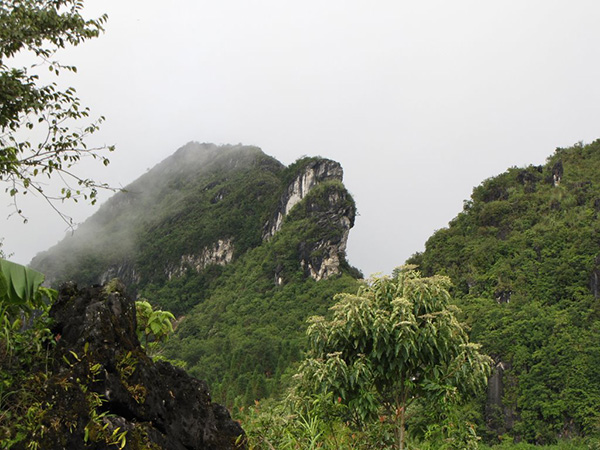 Ham Rong Mountain
Ham Rong Mountain
One of the places that you should never miss out on your Sapa Itinerary is Ham Rong Mountain situated in the center of Sapa. With the area of roughly 150 hectares, Ham Rong is an ideal destination for sightseeing and relaxation with the beautiful Orchid Garden, Peach Garden, and the Cloud Yard. Shaped like a dragon's head in the clouds with green trees and over 400 species of colorful blooms almost all year round, it is a truly fine combination of man-made and natural landscape.
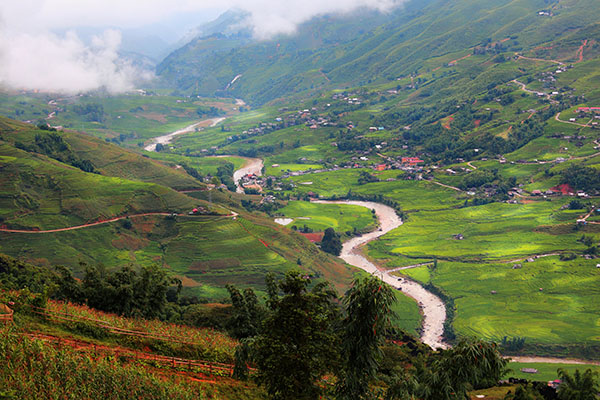 Muong Hoa Valley
Muong Hoa Valley
As a crucial part of Hau Thao Commune and located 8 kilometers away to the Southeast of Sapa, Muong Hoa Valley is also a unique feature that attributes to the popularity of this Northwestern region. It has 196 strange carvings of the ancient inhabitants dated back to thousands of years ago which archaeologists haven't been able to decrypt yet. On the main road leading to Muong Hoa Valley, you will be enchanted with ancient alien rocks, bamboo forest, picturesque terraced fields as well as the villages of weaving and dyeing cloth of the Hmong.
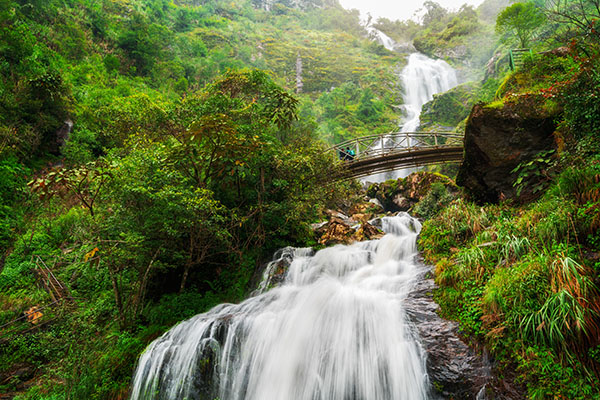 Silver Waterfall
Silver Waterfall
Not only blessed with the fresh serene atmosphere with ranges of mountains stretching surround, but Sapa is also impressive with majestic and marvelous waterfalls, especially Silver Waterfall (Thac Bac), the upstream of Muong Hoa Stream. With a height of 200m high, the waterfall looks like a white dragon looking down from the sky. You will have an opportunity to immerse yourself in the romantic natural scenery majestic but exceptionally poetic. The sounds of murmuring streams blending with bird singings inevitably bring you to the so-called heaven on earth.
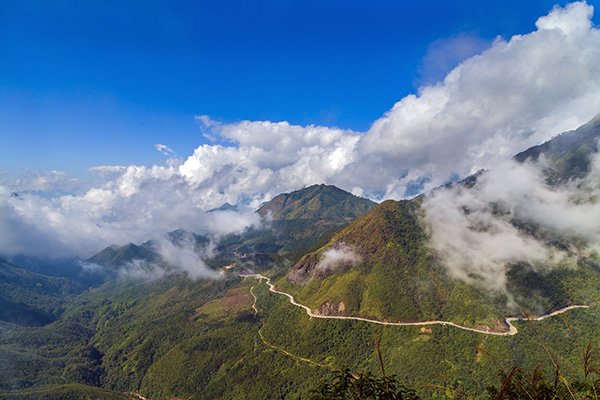 O Quy Ho Pass
O Quy Ho Pass
The 50-kilometer long road that runs around the Hoang Lien Son Range, between the northern provinces of Lao Cai and Lai Chau is O Quy Ho Pass. Blessed by nature, its beauty offers tourists a majestic landscape. Travelers with a heart for life often explore the route as part of their trip to the nearby famous Sapa.
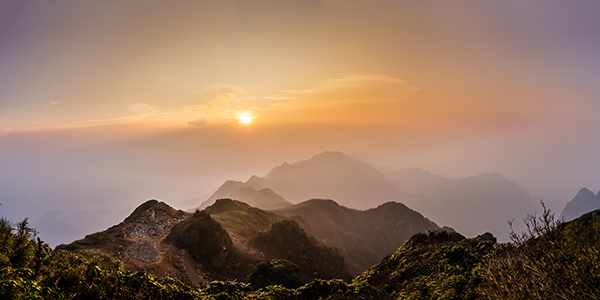 Fansipan Mountain Peak
Fansipan Mountain Peak
Fansipan belongs to Hoang Lien Son sierra, a range of many high mountains situated around 9 km to the north-west of Sa Pa town. It is called "The roof of the Indochinese Peninsula" due to the exceptional height of 3143 m from the sea level, which is the greatest among the mountains in the Indochina Peninsula. One interesting fact is that "Fansipan" actually means "Tottery Giant Stone Slab" in the local language.
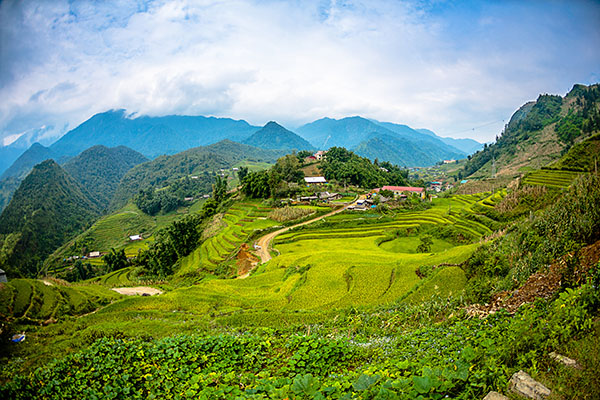 Cat Cat Village
Cat Cat Village
Take a trip to Sapa, and you might have to praise its distinctive culture and different beauty of several ethnic villages. A typical one among them is Cat Cat Village - an age-old village of H'Mong ethnic group, which is about three kilometers from Sapa Town. With beautiful valley, colorful, picturesque sceneries, an impressive waterfall, and unlost racial practices, Cat Cat village merit repeat visits. But if you're just starting your explorations of one of Vietnam's most beautiful ethnic village, these stops will steer you in the right direction.
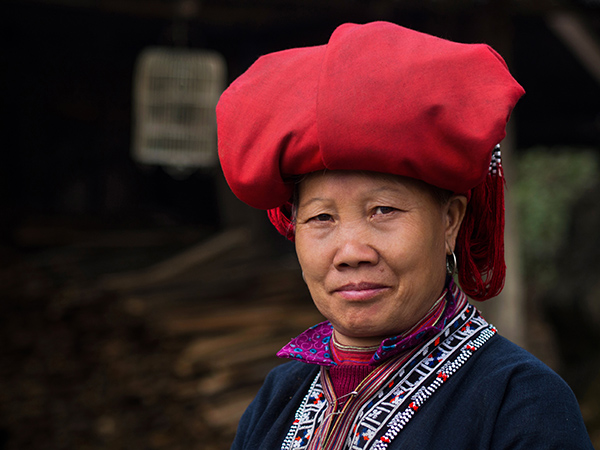 Ta Phin Village
Ta Phin Village
One of the most beautiful villages of Sapa, peaceful Ta Phin, around 15 kilometers in the northeast of Sapa, makes for a great day trip. This is a village of the "Dao Do" ethnic group, nestled in a beautiful and pristine valley. Visiting Ta Phin, you can easily catch images of Dao Do women in a gorgeous and colorful dress made from brocade, a traditionally hand-made product of local people here.
Culture
Home to twenty-five ethnic hill tribes, Lao Cai, is frequently visited by travelers looking to experience the life of the tribes and enjoy spectacular views of pristine beauty. If you want something historical, try visiting Muong Hoa Valley, beautiful caves in Cam Duong or Bac Ha to find pictures, maps, handwritings from centuries ago. If you want something else more entertaining, a trekking trip to the villages of the ethnic groups is an absolutely excellent idea. Visiting Ta Phin village, tourists can catch images of Dao Do women in a stunning and colorful dress made from brocade, a traditionally hand-made product, experience herbs-bathing service and take part in many traditional festivals. That will be an impressive experience for any tourists visiting this land.
Best Time To Visit
The best time to travel to Sapa is from September to November or from March to May. At this time, Sapa weather is stable, sunny during the day and getting a bit cold at night. The period from April to May is the time when ethnic minorities transplant rice in terraced fields. And this is also the blooming season of many beautiful flowers. September to October is when the rice becomes ripening yellow. All the viewing angles of Sapa are glowing.

